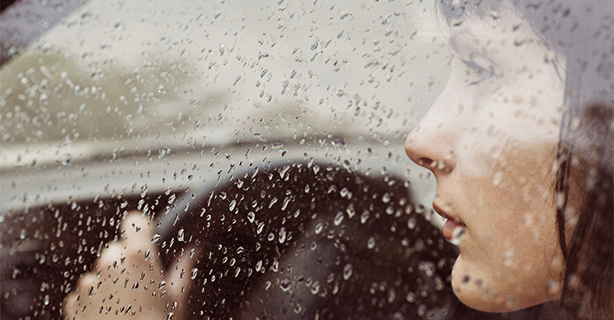5 tips for driving in the rain safely
0 min. read
April showers can bring more than just flowers—they can also lead to dangerous driving conditions and accidents. Whether you encounter a brief sprinkle or a heavy downpour, you need to know how to safely drive in the rain. Here are a few tips:
Be proactive
Give your car a quick once-over before the rainy season hits.
Do your windshield wipers work? If they leave a blurry streak on the glass, make a screeching sound when in use, or bounce across your windshield, you're probably due for a replacement.
Do your headlights and taillights work? Most states require drivers to use their headlights in rainy conditions. Here's a general rule of thumb: When your wipers are on, your headlights should be, too.
How is your tire traction? If your tires are balding, maintaining traction in the rain can be difficult. One of the simplest ways to check your tire tread is by placing a penny between the tread ribs on your tire, with Lincoln's head pointing down. If you can see his entire head, your tire tread is too shallow—it's time to get new tires.
Stay back from other vehicles
A rainy day is not the time to tailgate your fellow drivers because you're in a hurry. Give yourself more time to get to your destination, and keep a large distance between you and the car ahead of you. Extra room provides a greater opportunity to react when you need to slow down or brake quickly. Try to anticipate your stops and take your foot off the gas earlier than you would in dry conditions.
Remember, speed limits are designed for ideal conditions, when traffic is low, visibility is good, and road surfaces are dry. You'll likely need to drive below the speed limit to be safe in wet conditions.
Avoid standing water
Whenever possible, don't drive through standing water, including large puddles. It could be deeper than it appears, plus you could hydroplane, lose traction, and skid across the water's surface. If you catch yourself hydroplaning, don't panic and overcorrect or slam on the brakes. Instead, take your foot off the gas and steer the car in the direction you need to go.
Give cruise control a break
While cruise control is convenient in dry weather, it's not safe in wet road conditions. In fact, it can actually increase your chances of hydroplaning, because it attempts to keep your vehicle at a constant speed instead of slowing down to account for road conditions.
Evaluate your trip
While some drives are mandatory—like picking the kids up from school or driving to work—ask yourself if the trip you’re about to make is essential. Do you need to drive right now, even in potentially dangerous weather? It’s OK to stay home if you don’t feel prepared to tackle the road with the added elements.
While precautions like the ones we’ve listed above can help you prepare for rainy and wet road conditions, we know life happens—and so do accidents. If you find yourself in an accident, Dairyland® is here to help. Check out this article for several key steps to take after an accident.
If your car breaks down in wet weather, we can help you with our towing and labor coverage. Find a safe spot to pull over and give us a call. We’ve got you covered.
Related links
Wondering how to file a claim after an accident? Don’t worry—we’re here for you.
Need help budgeting for car insurance? We have helpful tips for that as well. Find out how to keep your insurance costs down.
The general information in this blog is for informational or entertainment purposes only. View our blog disclaimer.
*Data accuracy is subject to this article's publication date.







